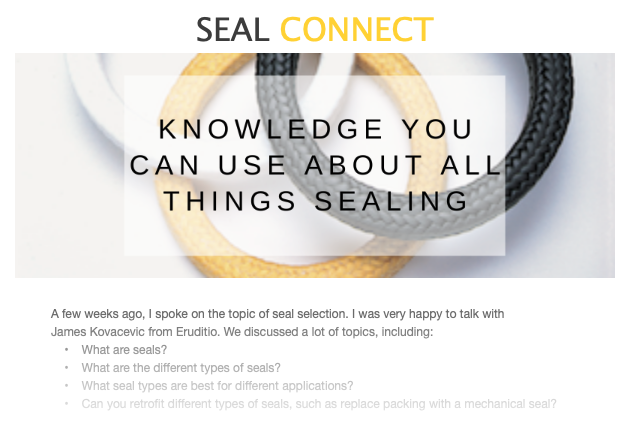Streamlining Slurry Handling in Mining Operations: A Case Study on Custom Air Seals and High-Performance Plastics
 ABSTRACT
ABSTRACT
In the demanding environment of mining operations, slurry pumps are critical for transporting abrasive ore-laden mixtures, but frequent seal failures can lead to significant downtime and financial losses. This paper examines a real-world case from a mining site in the Rocky Mountains, where bi-monthly seal breakdowns in slurry pumps resulted in over $1.2 million in annual costs. Through collaboration with SEPCO (Sealing Equipment Products Company, Inc.), a hybrid solution incorporating custom air seals and high-performance plastics such as PEEK (polyetheretherketone) and filled PTFE (polytetrafluoroethylene) was implemented. The result was an extension of mean time between failures (MTBF) to 18 months, a 90% reduction in downtime, and annual savings exceeding $900,000. This case study highlights the role of advanced materials science and non-contact sealing technology in enhancing equipment reliability under extreme conditions, drawing on technical insights from industry practices and material properties.
INTRODUCTION
Mining operations, particularly in rugged terrains like the Rocky Mountains, rely heavily on slurry pumps to transport mixtures of water, ore particles, and other solids from extraction sites to processing facilities. These pumps handle highly abrasive slurries, which consist of suspended solid particles that can range from fine sands to coarse rocks, often in acidic or alkaline environments. The efficiency of these systems is paramount, as any disruption can halt production and incur substantial costs. Historically, seal failures—whether mechanical or packing-based—have been a persistent challenge in such applications, primarily due to abrasion, corrosion, and vibration induced by high-velocity flows.
This paper presents a comprehensive analysis of a mining operation’s struggle with slurry pump reliability and how SEPCO’s innovative air sealing solutions addressed it. By integrating custom air seals with high-performance plastics, the solution not only mitigated failures but also improved overall system performance by eliminating contact wear. The discussion includes the problem’s root causes, the technical design of the solution, implementation details, quantifiable results, and broader implications for the mining industry.
THE CHALLENGE: SEAL FAILURES IN ABRASIVE SLURRY ENVIRONMENTS
At the core of the issue was a mining operation processing ore-laden mud through centrifugal slurry pumps. These pumps operated under harsh conditions, with slurries containing abrasive particles such as silica, iron ore, and other minerals that eroded seal faces and scored pump shafts. Seal failures occurred approximately every two months, leading to unplanned downtime of 48 hours per incident. Each breakdown required $80,000 in direct repair costs, including parts and labor, and resulted in $150,000 in lost extraction revenue due to halted operations. Scaled across the site, these failures amounted to more than $1.2 million in annual losses.
The primary causes of these failures align with common industry issues:
- Abrasive Wear: Solid particles in the slurry act as grinding agents, wearing down sealing surfaces. This is exacerbated in settling slurries where hard, sharp particles accumulate and cause rapid degradation. In centrifugal pumps, the high-speed rotation (up to 20 m/s) amplifies this effect, leading to micro-abrasions that compromise the seal’s integrity.
- Shaft Scoring and Vibration: As seals degrade, particles infiltrate the shaft area, causing scoring and misalignment. This increases vibration, further accelerating wear and potentially damaging other pump components like impellers and casings.
- Chemical and pH Extremes: Mining slurries often exhibit pH levels ranging from 2 (highly acidic) to 12 (alkaline), which can corrode standard seal materials. Combined with temperatures and pressures in the pump, this creates a multifaceted assault on seal longevity.
Traditional solutions, such as mechanical seals or basic packing, proved inadequate, as they involved contact elements that lacked the durability to withstand these conditions without frequent replacement. In similar cases, seal life has been extended through non-contact designs, but without advanced air-based systems, failures persist. The mining operation sought a more robust approach to minimize downtime and optimize costs.
SEPCO’S INNOVATIVE HYBRID SOLUTION
SEPCO, a leading manufacturer of fluid sealing solutions, specializes in custom designs for industries like mining, where equipment faces abrasive and corrosive challenges. For this operation, SEPCO developed a hybrid air seal system integrated with high-performance plastics, specifically the SAS-P air seal designed for slurry pumps. This solution uses a non-contact air purge to create a barrier, preventing leakage and particle ingress while supporting the shaft with durable bushings.
The core of the seal features:
- Air Purge Mechanism: A controlled air flow creates a positive pressure barrier between the seal faces, eliminating physical contact and thus preventing abrasive wear. This system is ideal for slurries, as it avoids the erosion common in contact seals and requires no flush water, reducing environmental impact.
- Elastomer Components: Specialized elastomers resistant to pH extremes (2-12) and chemical attacks from mining slurries. These maintain flexibility and sealing efficacy across varying temperatures and pressures.
- High-Performance Plastics for Bushings: Dual shaft-supporting bushings made from PEEK or filled PTFE, along with a lantern ring for air distribution. PEEK, with its high modulus of elasticity (up to 3,000 MPa), offers superior mechanical strength and dimensional stability at elevated temperatures (up to 250°C). Filled PTFE, enhanced with additives like glass or carbon, reduces friction and improves wear resistance in abrasive environments. These materials support the shaft at velocities up to 20 m/s, reducing vibration, handling shaft runout and deflection, and extending life via superior modulus.
This design draws from SEPCO’s expertise in air seals, which are engineered for pumps in non-hazardous services like mining slurries. Unlike traditional mechanical seals, air seals operate without contact, using air (typically 5-10 psi above process pressure) to lubricate and separate components, minimizing heat and wear. The integration of plastics like PEEK and PTFE addresses limitations of metals alone, as these polymers exhibit low coefficients of friction (0.1-0.3 for filled PTFE) and high chemical inertness, making them perfect for supporting roles in air seal systems.
Technical Specifications and Material Science Insights
To appreciate the solution’s efficacy, consider the technical properties enabling performance in slurry applications
| MATERIAL/COMPONENT | KEY PROPERTIES | BENEFITS IN SLURRY HANDLING |
| Air Purge System | Pressure: 5-10 psi above process; Non-contact | Prevents abrasive particle contact, reduces wear to near zero. |
| Elastomers | pH resistance: 2-12; Elastic modulus: 1-10 MPa | Maintains seal under chemical extremes, preventing leaks. |
| PEEK Bushings | Modulus: 3,000 MPa; Temp. range: -50°C to 250°C | Provides structural support, reduces vibration at 20 m/s velocities, handles misalignment. |
| Filled PTFE Bushings | Coefficient of friction: 0.05-0.2; Wear rate: Low (10^-7 mm³/Nm) | Minimizes abrasive wear and energy loss, enhancing efficiency. |
| Lantern Ring | Air distribution; Corrosion-resistant | Ensures even air flow for consistent barrier, supports bushing alignment. |
These materials were selected based on their synergy: The air purge handles primary sealing without contact, while plastics provide secondary support and damping. In abrasive slurries, PEEK’s rigidity prevents deformation, and filled PTFE’s self-lubricating nature reduces power draw by up to 25% through lower friction. This non-contact approach ensures the seal operates with minimal clearance, blocking particle entry while accommodating operational variances like vibration.
IMPLEMENTATION PROCESS
The solution’s deployment was designed for minimal disruption. SEPCO’s custom air seals were engineered in under two weeks, aligning with their rapid prototyping capabilities. Installation took just one hour during routine maintenance, requiring no major modifications to existing pumps. This plug-and-play approach involved:
- Removal of failed seals and inspection of shafts for scoring.
- Insertion of the air seal assembly, including bushings and lantern ring, with air supply connections.
- Testing under operational conditions to verify air barrier integrity, vibration reduction, and leak-free performance.
Training for on-site technicians ensured proper handling, further reducing future intervention needs.
RESULTS AND RETURN ON INVESTMENT
Post-implementation, the air seals achieved an MTBF of 18 months—a ninefold improvement over the previous bi-monthly failures. Downtime was slashed by 90%, from multiple 48-hour halts to rare, planned maintenance. Annual cost savings included $900,000 from reduced repairs and lost revenue, plus additional benefits from 25% lower power consumption due to decreased friction and vibration.
In similar SEPCO cases, air seals in slurry pumps have extended life significantly through non-contact operation, validating this approach. The ROI was realized within months, with the initial investment in custom seals offset by avoided losses. Environmentally, the air-based system eliminated flush water usage, minimizing water consumption and slurry spillage, enhancing site sustainability.
CONCLUSION
This case study exemplifies how SEPCO’s mastery in materials science and air seal technology transforms adversity into efficiency in mining operations. By leveraging custom air seals like the SAS-P with high-performance plastics such as PEEK and filled PTFE, the solution not only resolved chronic seal failures but also set a benchmark for reliability in abrasive environments. For mining companies facing similar challenges, adopting such tailored, non-contact innovations can yield substantial economic and operational gains, underscoring the value of partnering with specialized sealing experts. Future advancements may incorporate smart monitoring, but the foundation remains in durable, adaptive non-contact systems.
 SEAL CONNECT
SEAL CONNECT Find Your Sealing Solution
Find Your Sealing Solution